The Complete FroKnowsPhoto 6-Hour Photo Guide to Shooting Video
Now you can learn the fast track the system used by a world-class photographer and videographer to
shoot, direct, and produce any type of video, regardless of your current skill level.
shoot, direct, and produce any type of video, regardless of your current skill level.
Introducing…
the ultimate guide to unlocking the hidden power of your DSLR so you can start
shooting high-quality video in the next few days:
The Fro Knows Photo Guide
to Shooting Video
With this brand new video guide you’ll:
- Be able to shoot any type of video with your DSLR, micro 4/3's, or mirrorless camera
- Instantly make more money with your DSLR by adding an in-demand and high-value skill to your arsenal
- Learn the video production secrets of an award-winning filmmaker and photographer so you can start shooting high-quality video faster than you ever thought possible
As a lifelong photographer, I know
what it’s like to be frustrated by the quality of your videos. You’re dealing
with the same concepts and settings -- like shutter speed, ISO, and aperture --
but the rules are completely different. When I first started shooting video I
got frustrated pretty quickly when I couldn’t figure everything out, despite my
years of photography experience.
Searching
for information only led to more questions, years of painfully slow learning
and endless hours of experimentation that gave me so-so results for a LONG
time…
After
the last 4 years of shooting and producing my own videos, I know firsthand how
much there is to learn and how difficult it is to find the RIGHT information
that helps you get better instead of worse. It honestly took me years to learn
all of the secrets, techniques, and concepts that go into shooting world-class
videos.
I
don’t want that for you though.
What if you could
take a massive shortcut and get ALL of the information you need to shoot video
in a matter of days instead of years?
What if you could learn exactly how an award
winning filmmaker and photographer shoot, produce, direct, and edit
breathtaking HD videos using an entry-level DSLR?
What if you could look behind the scenes, follow
them on video shoots to learn their secrets, and see exactly how to do it for
yourself...all at the same time?
With the brand new Fro Knows Photo Guide to
shooting Video you can do all of this and much, much more with ANY DSLR that
shoots video.
This guide will introduce you to our “one man
band” concept which means that you will be able to:
- Easily shoot, direct, produce and edit videos on your own without a crew or any extra help
- Create breathtaking videos, even if you have an entry-level camera and no expensive equipment (even if you’re on a shoestring budget, you can do everything we teach)
- Create dynamic scenes, tell inspiring stories and capture high-quality video
This guide was carefully designed to be invaluable to
professional, hobbyist, and newbie photographers alike
Whether you just bought your first DSLR or
you’re a seasoned photographer that wants a fast and systematic approach to
DSLR video, this guide is going to be extremely valuable to you.
Do you want to shoot video like a pro?
Have you ignored video because you don’t know
exactly how to set up your camera, audio, lighting, or video shoots?
Have you had a DSLR for a while but haven’t
ventured into shooting video because you’re not happy with the results you’ve
been getting?
Or, do you just think the video is too expensive and
complicated to produce?
If you answered yes to any of the above
questions then I have some GREAT news:
It doesn’t matter if you want to make more money
with your DSLR by shooting professional videos like interviews, electronic
press kits, music videos, and movies…
Or you just want to shoot better videos of your
kids sporting events...your sister's wedding...or your own passion
projects...this new guide has you covered.
The FroKnowsPhoto Guide to Shooting Video will
give you all of the tools you need to shoot…
After 4 years of creating over 1,700 YouTube
videos and two full training guides I’ve gotten A LOT of questions about how I
shoot, produce, direct, and edit my videos. In fact, so many of my readers
requested more training on my DSLR video process that I decided to put together
my most comprehensive guide yet...
I partnered up with my good friend and award
winning filmmaker Todd Wolfe to create the most comprehensive system for
learning DSLR video I’ve ever created: the Fro Knows Photo Guide to Shoot
Video.
This guide is going to help you:
- Learn the entire process of shooting any type of video from start to finish (with step-by-step detail and real-world examples)
- Shoot high-quality videos of ANYTHING you can imagine - our rules and secrets apply to virtually every type of video!
- Shave months or years of time off the process of learning to shoot solid video of anything
- Discover the secrets of shooting video straight from an award-winning filmmaker and photographer
- Learn from someone who focuses on just video and someone who has successfully transitioned from stills to video
In this guide, Todd and I dissect the ENTIRE
process of shooting, lighting, capturing audio, and directing videos shot with
a DSLR camera. We break down everything into easy to follow steps that anyone
can learn from, whether you’re a seasoned pro or a complete newbie.
Before I go any further, let's get one thing clear:
this isn’t your standard
stiff and boring training program…
We don’t just sit there and feed you boring
theory or useless fluff.
This, like all of my guides, is a HANDS-ON
training program designed to help you learn as rapidly as possible. You’re
going to feel like we’re “on set” training you and teaching you our entire DSLR
video system 1-on-1.
We don’t just talk about it either. You’ll
get to tag along on four different video shoots so you can see our entire process as it happens. This is going to help you not only learn the concepts but truly understand them so you can start shooting your own videos as soon as
you finish the guide. We also take you INSIDE the camera so you can see exactly
what the camera sees as we are shooting on set.
Not only is this no holds barred training
program going to help you become a skilled videographer, with our highly engaging teaching style and insightful homework assignments you’ll absorb and
understand the ideas QUICKLY so you can start creating your own videos in the
next few days or weeks.
The Fro Knows Photo Guide to Shooting Video will
help you take better video than you ever have before, even if:
- You’ve tried shooting your own videos and got mediocre results at best
- You’ve tried learning video from other places around the Internet but still aren’t confident with your video skills
- You’re on a budget and can’t afford fancy equipment or a crew
- You just got your DSLR and don’t know where to start
- Shooting video frustrates you and you think it’s too complicated
- You’re a seasoned photographer with years of experience but have little experience with video
This the guide is for you if you:
- Don’t want to spend months or years hunting for all the information you need to shoot video
- Want to make more money with your DSLR
- Like learning from experienced pros with a solid track record
- Think shooting high-quality DSLR video is too difficult or aren’t sure where to start
- Are already shooting video but want to see how an award-winning filmmaker does it from start to finish
- Are a seasoned photographer who wants to quickly add a video to their arsenal
Here’s an
overview of what you’ll find in the first section:
Camera Basics For Video
Whether you have a Full Frame, Cropped Sensor, Mirrorless or Micro
4/3rds camera the same camera basic rules apply.
The goal of this section is to quickly refresh some best practices
when venturing into shooting video.
A few of the secrets waiting for you in this section…
- Todd's recommended equipment setup for shooting on-site or onset (everything you need to do it right and make it a smash hit)
- The type of memory cards you should use for video and why (this is different than still photos)
- The definitive guide to different sensor sizes, including the pros and cons of each
- Our best practices to avoid issues when on shoots (most people completely overlook these)
The Importance of Frame Rate
Frame rate is one of the most important settings
for DSLR video. Many cameras offer you 24, 30, and 60 fps but if you don’t
choose wisely you might not capture the video you were looking for. In this section, you will see us use Hungry Hungry Hippos to demonstrate the differences
between the frame rates.
A few of the secrets waiting for you in this
section…
- How to master 24, 30, and 60 frames per second and exactly when you should use each
- Todd’s best practices for capturing slow-motion footage
- How to get the cinematic "film look" with your DSLR
- One a simple adjustment that will make your videos look clean and crisp
What is the BEST Resolution?
Cameras today offer many different resolutions from low quality
VGA to 1080HD and beyond. It’s extremely important to understand what the
differences are and the reasons why you should select one over another. This is
one section you can not miss.
A few of the secrets waiting for you in this section…
- The #1 reason why you should always shoot video at your camera's highest resolution (most people completely forget about this)
- How to tell if your camera is automatically lowering your resolution and how to prevent it from happening again
- How to “future proof” your work so you can keep up with industry standards
The Mystery of the Video Exposure Triangle Revealed
Yes, there is an exposure triangle for video just like the photo. In fact, it’s made up of the same elements but they act differently for video. Even
if you have a handle on your exposure triangle for the video you’re going to want
to see the differences in action so you don’t make any of these common exposures mistakes.
A few of the secrets waiting for you in this section…
- Why a basic kit a lens with a slower aperture may be easier when attempting to follow focus
- The exact parts of the exposure triangle, you should focus on locking in (this is different than with stills)
- Our video exposure triangle demonstration where you get to visually see the “cause and effect” when we make changes
How Shutter Speed Is Different For Video
Shutter Speed is directly tied into your frame rate
but if you are coming from the stills world you have to know that shutter speed
does more than just let more light in or cut back on the light. There is no better
way to see this in action than to watch the section where we show a metronome
at different shutter speeds.
A few of the secrets waiting for you in this
section…
- Our “rule of thumb” to determine your exact shutter speed in comparison to your frame rate in under 10 seconds (this works every time!)
- The differences between shutter speed for photos and video (many new videographers take months or years to really understand this)
- What happens if you break the rules and shoot at a much faster shutter speed
Aperture
Yes it controls the amount of light and depth of field but
selecting the proper aperture will play a major part in how well you can
“Follow Focus” to help you get that tack sharp video. The best way to see this
inaction is to watch us at the piano tickling the ivory.
A few of the secrets waiting for you in this section…
- Our simple and easy to remember advice for making sure your videos are ALWAYS in focus
- How to tell if you should shoot wide open vs. closed down
- Our selective focus method that makes your videos even more interesting
ISO
Sometimes you just have to ride your ISO up or
down to allow your shutter speed and aperture to work with the frame rate you
chose. This plays a major role in the final quality of your video and whether
or not you need to bring in more lighting.
A few of the secrets waiting for you in this
section…
- How we determine how high or low of an ISO to use in each shot
- One a simple adjustment that will allow you to dramatically lower your ISO
- How you can use higher ISO to gain the “artistic look”
Why Are Picture Styles Important?
How much work do you want to do in the post? Can your computer handle
all the processing needed to do color correcting of a “flat” picture style? Our
DSLRs are not capturing RAW video (yet) so we have to pay very close attention
to how we set our picture controls.
A few of the secrets waiting for you in this section…
- Our top tips and tricks for making sure your picture style is always set properly
- Todd’s “safeguards” to make sure you don’t set your styles wrong (this will avoid a lot of frustration and headaches in post-production)
- Todd and Jared are the technique to visually see the difference between an acceptable picture style and one that’s not even close
How to Stabilize Your Camera (Camera Supports)
One of the keys to high-quality video is stable
footage. This means you will need a way to keep your camera still even when you
are on the move. In this section, we make it a key point to walk you through and
demonstrate as many options as possible.
A few of the secrets waiting for you in this
section…
- How you can get a stable video every time, even with no budget for more equipment
- Our favorite techniques to utilize the gear you already have to stabilize your video
- The #1 reason why you want to get stable video in the camera opposed to doing it in a post (this is huge for video quality)
Wow, How Did You Get That Smooth Movement?
This section is all about camera movement. Sure you can shoot all
of your DSLR videos stationary, but when you add movement your videos take on a
whole new life. Check out all the different ways you can get movement to bring
life to your videos.
A few of the secrets waiting for you in this section…
- The best gear options for adding professional movement to your videos
- Todd’s weird tip for adding movement in the RIGHT places to make your videos look much more professional
- The best stabilizer to use to create dramatic scenes and openings
The Simple 3 Point Lighting Demonstration
This lighting tutorial can be used in almost any situation. You’ll
get to watch as we build from one to two to three lights so you can see how
everything comes to life quickly and easily.
A few of the secrets waiting for you in this section…
- How you can build a simple lighting setup to be used on almost any shoot
- One simple way to create more dimension by making subtle changes to your key and fill lights
- How to decide if you should use natural or artificial lighting
- Our favorite ring light to create hard light and contrast in your scene
Finally
Understand Audio Capture
(Get This Right or Your Video is Trash)
Quite possibly the most important part of your
video has nothing to do with actual video, it’s audio. You could have the best-looking video in the world but if it sounds terrible no one will watch it. This
section will take the guesswork out of how to set your audio levels. This is
one thing I struggled with for a long time when first when I started shooting
DSLR video. No matter what situation you will be in we has you covered with
demonstrations.
A few of the secrets waiting for you in this
section…
- Our best pro tips for making sure your levels are ALWAYS in check
- How to properly sync audio to save a ton of time in post
- A complete guide to microphone options and when you should use each
Composition and Coverage
Now that we are using moving images you have to really pay close
attention to composition and coverage. Many of the rules of composition for
photography still hold true with video but with some important additions to pay
close attention to. You’ll get to learn all about coverage and why is it
important since it’s the glue that holds your videos together.
You want to make sure you come back with all the footage options
you need...wide shots, medium, tight, OTS, or over the shoulder. Getting this
just right helps tell your story which is key for creating videos people love
to watch.
A few of the secrets waiting for you in this section…
- A simple rule to “guide the audience” towards what you think is important in the scene
- Where you should position your camera to tell the exact story you want
- Why you need to create a “character axis” BEFORE shooting any scenes
Continuity
This section covers how to keep continuous
action and consistent detail in the various scenes. A prime example would be if
the person you are interviewing has on glasses in one shot they better have
them on in the next.
A few of the secrets waiting for you in this
section…
- Why it’s critical to pay attention to seemingly minor details from scene-to-scene
- How to help your audience better understand the world you’re creating in your videos
- A walkthrough on how to tie together coverage and continuity to make your viewers feel immersed in the scene
The 180 Degree Rule
All I can say is I messed this up once and it will never happen
again. There is a very specific reason this is a rule and why we spend so much
time explaining and demonstrating it.
A few of the secrets waiting for you in this section…
- A crash course on the 180 rule and why you need to follow it strictly
- How to avoid confusing the people watching your video
- A simple strategy to apply the 180 rule on all of your shoots
A Crash Course in Directing
It’s your job to get the right reactions from whoever you are
shooting. In this section, we hold nothing back and give you all of our best
tips for being a better director.
A few of the secrets waiting for you in this section…
- How to pull out the emotion in your scene from an actor
- What to look for during an interview that will give you even better results
- Three subtle tips that will take you from being just another person shooting video to a bonafide director
Producing Crash Course
Being prepared is a major part of being a
successful filmmaker. Did you storyboard your shoot? Did you scout your
location? Did you hire talent? Pay close attention to this section as it will
make your job so much easier.
A few of the secrets waiting for you in this
section…
- How to make sure you always select the right location for your shoot
- The one thing to always remember that will jeopardize your shoot and cost you A LOT of time and money if you forget
- Our simple strategies for dealing with situations when out on a shoot
Four REAL World Shoots
Now
that we are using moving images you have to really pay close attention to
composition and coverage. Many of the rules of composition for photography
still hold true with video but with some important additions to pay close
attention to. You’ll get to learn all about coverage and why is it important
since it’s the glue that holds your videos together.
REAL WORLD
VIDEO SHOOT #1:
EPK / Corporate Shoot
Have
you ever saw a video that consists of interviews, live footage, b-roll and is
all cut together into a finished product? That is what we call an “Electronic
Press Kit” or EPK. This shoot will apply everything you’re going to learn in a
corporate/commercial interview setting.
This section will take you to step by step in setting up the camera, sound, and lights
for this client interview. Also, you'll watch as we go through the
process of interviewing a client and shooting the b-roll to compliment it.
Highly recommended for those with corporate, musician and wedding clientele.
REAL WORLD VIDEO SHOOT #2:
Music Video Shoot
This shoot throws everything
taught inside the guide at shooting a music video. Watch us use various camera
settings, lighting setups, and camera motion to create an awesome video. This
shoot also shows how direction can make your shots even better by simple
communication. Highly recommended for future music video directors.
REAL WORLD
VIDEO SHOOT #3:
Narrative / Movie Shoot
This
shoot utilizes the various techniques from this guide in a scripted narrative
setting like a short film or a full-length feature film. This section will
hammer down the importance of coverage and the 180 rule in addition to the essential camera, sound, and lighting settings, and techniques.
This section will also give you a ton of insight into working with talent and directing
scenes. Highly recommended for future filmmakers.
REAL WORLD VIDEO SHOOT #4:
Jared Makes A YouTube Video
Have you ever wondered what goes
into making a YouTube video? Is it as easy as you think it is or does it
actually take some time? In this section, you’ll get to see every step of the
process I go through when making a “quick” product preview. How do I get my
framing, focus, audio levels, and everything else right? This section gives you
everything you will need to know to shoot your own YouTube videos.

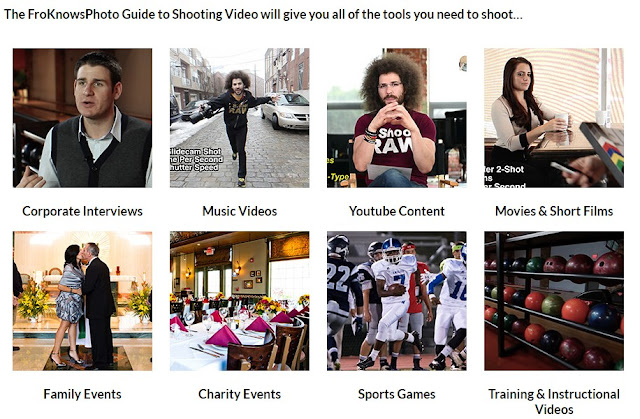
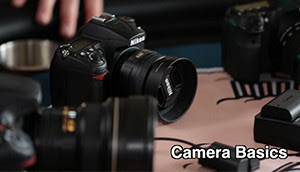




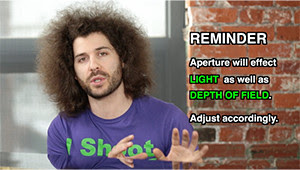


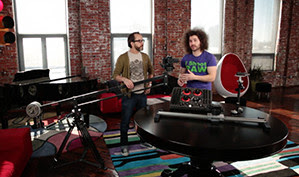



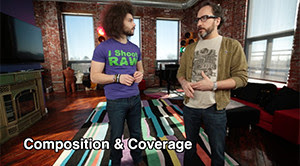




No comments:
Post a Comment